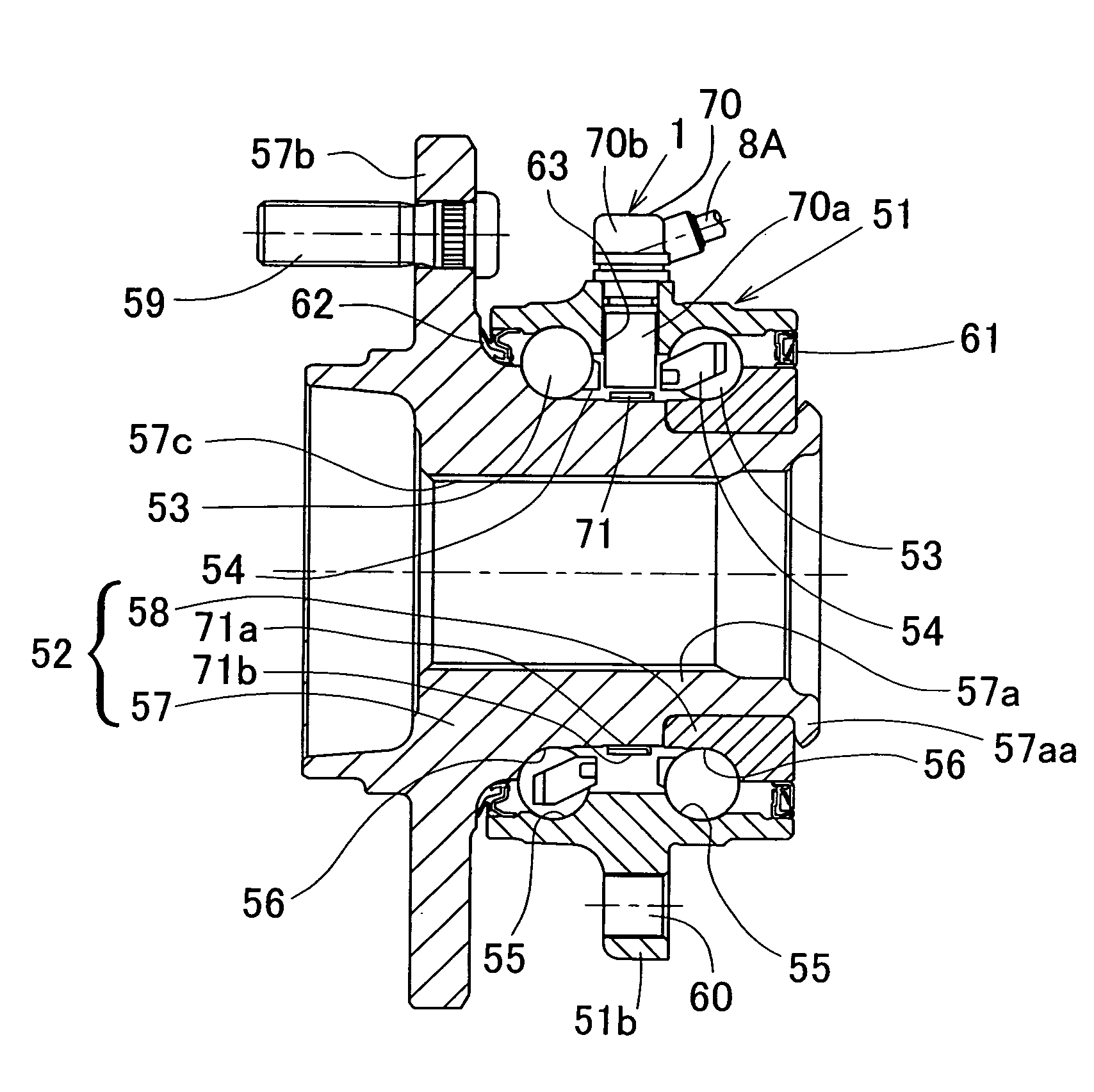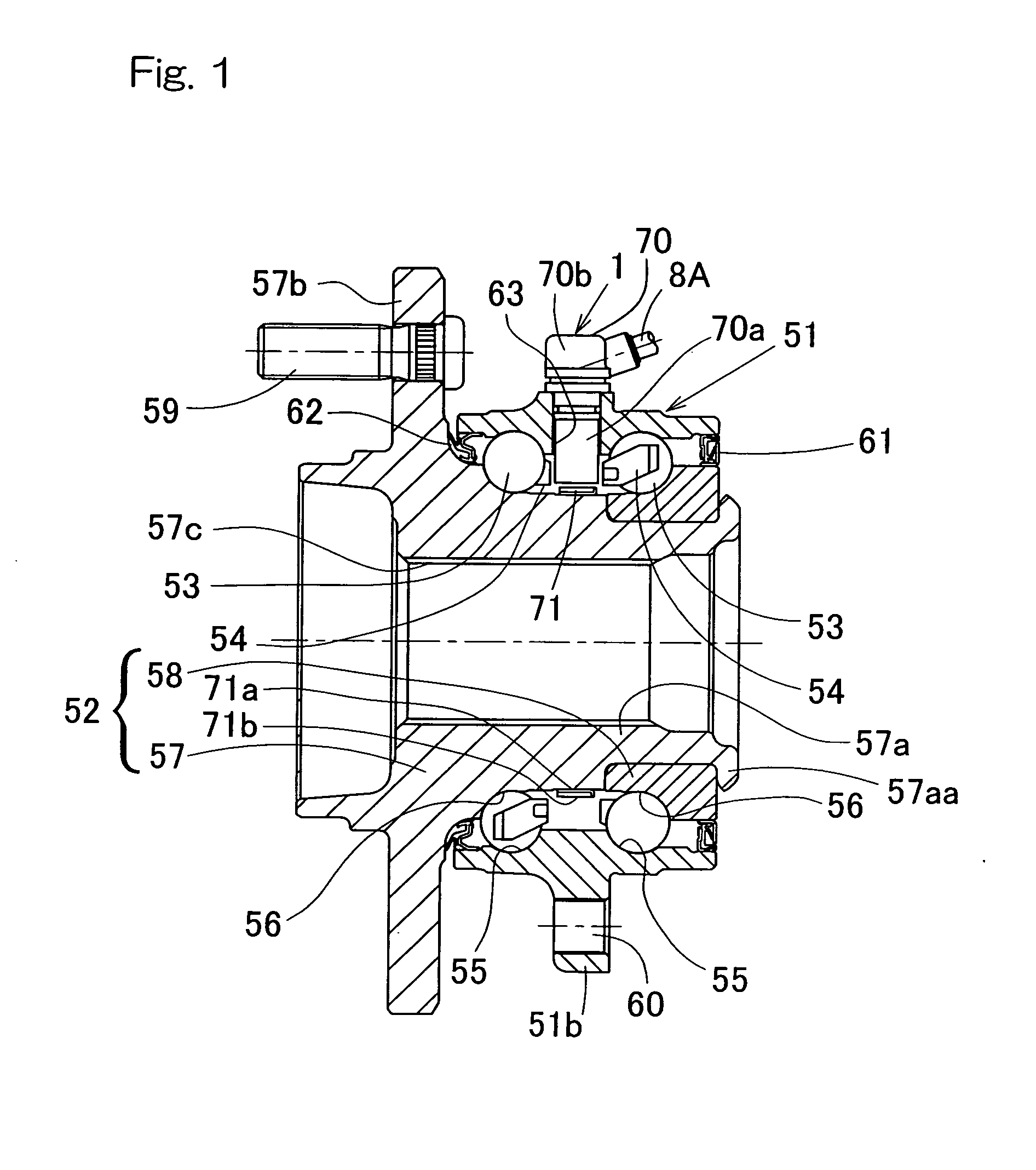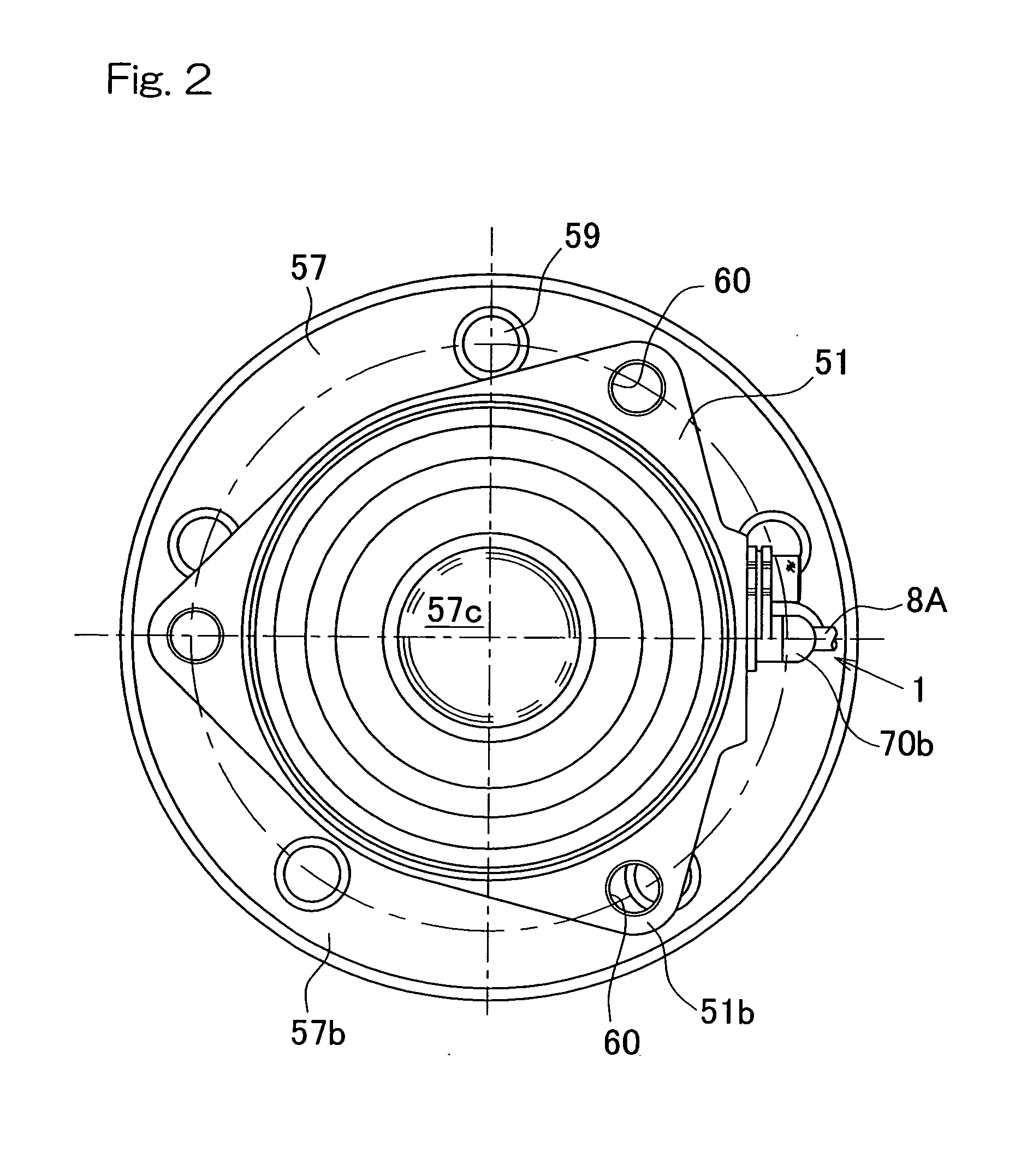Rotation detection device and bearing having rotation detection device
a detection device and bearing technology, applied in the direction of mechanical equipment, instruments, transportation and packaging, etc., to achieve the effect of reducing the number of processing steps, high precision and high precision
- Summary
- Abstract
- Description
- Claims
- Application Information
AI Technical Summary
Benefits of technology
Problems solved by technology
Method used
Image
Examples
first embodiment
[0089]As hereinbefore described, in the rotation detecting system 1 the speed detection is carried out by utilizing all of the multiplied pulses Pb, which are the pulses Pa generated from the sensor 3 and multiplied. Accordingly, the rate of speed detection, that is, the number of sampling times in speed detection can be increased as shown by x in FIG. 10, to thereby enhance the response to control in the rotation control utilizing the detected speed v. Also, even slight change in speed can be detected with high precision. It is to be noted that blackened triangles employed in FIG. 10 represent the case in which no multiplied pulse Pb is used, that is, a change in speed v detected as a result of the speed detection which has been carried out by the utilization of only the pulses Pa generated from the sensor 3.
[0090]FIGS. 11 and 12 illustrate charts showing a change in pitch error of the detection signal resulting from a change in gap between the sensor and the encoder magnet. In pa...
second embodiment
[0101]The wheel support bearing assembly according to the present invention will now be described in detail.
[0102]In the description that follows, component parts referred to in the following description, but similar to those described in connection with the foregoing embodiment are designated by like reference numerals and, therefore, the details thereof may not be reiterated for the sake of brevity. Also, where only a part of the construction is described in the following description, the remaining part or parts of the construction are to be understood as similar to those described in connection with the foregoing embodiment and that, unless inconveniences may arise in not only a combination of parts which are described in details in the foregoing embodiment, but also a combination in particular, parts of one embodiment can be combined with part of another embodiment.
[0103]The second embodiment specifically shown in FIGS. 13 and 14 is substantially similar to the first embodiment ...
seventh embodiment
[0111]A seventh embodiment, which is shown in and will now be described with particular reference to FIG. 23, is an embodiment directed to a so-called fourth generation type and, therefore, the inner member 52 is made up of a wheel hub 57A and a constant velocity joint outer race 81.
[0112]A constant velocity joint 80 is of a structure in which a plurality of axially extending raceway grooves are formed on a spherical inner surface of the outer race 81 and a spherical outer surface of an inner race 82, respectively, and torque transmitting balls 83, retained by a ball retainer 84, are interposed between the raceway grooves that are opposed to each other. The constant velocity joint outer race 81 has a cup portion 81a and a hollow stem portion 81b protruding axially from an outer bottom surface of the cup portion 81a. The stem portion 81b is inserted into the wheel hub 57A of the wheel support bearing assembly and is relatively nonrotatably coupled with the wheel hub 57A by means of a...
PUM
 Login to View More
Login to View More Abstract
Description
Claims
Application Information
 Login to View More
Login to View More - R&D
- Intellectual Property
- Life Sciences
- Materials
- Tech Scout
- Unparalleled Data Quality
- Higher Quality Content
- 60% Fewer Hallucinations
Browse by: Latest US Patents, China's latest patents, Technical Efficacy Thesaurus, Application Domain, Technology Topic, Popular Technical Reports.
© 2025 PatSnap. All rights reserved.Legal|Privacy policy|Modern Slavery Act Transparency Statement|Sitemap|About US| Contact US: help@patsnap.com



